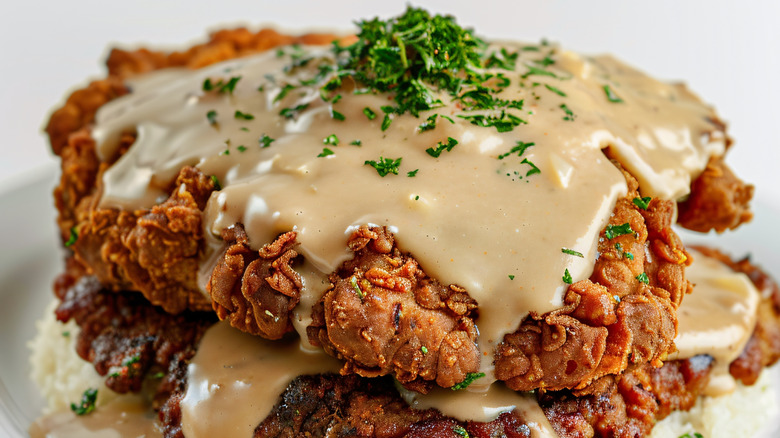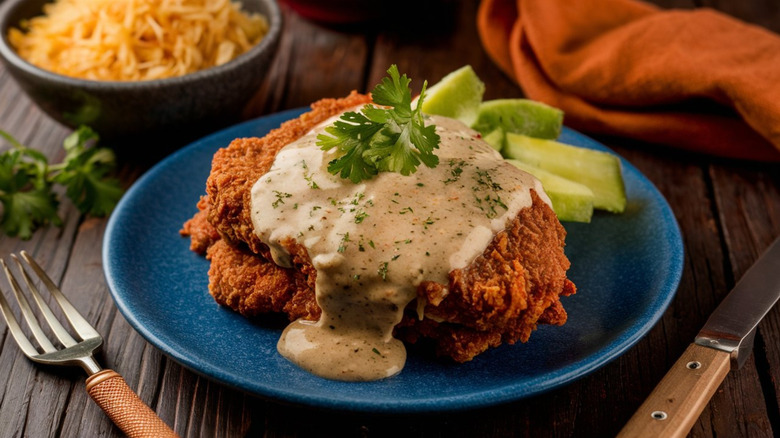You Don't Need To Worry About Overcooking Chicken Fried Steak. Here's Why
We may receive a commission on purchases made from links.
Golden with craggy, textured edges, the carby coating on chicken fried steak is identical to the seasoned flour dredge that's used to make fried chicken. This coating crisps up in hot oil and develops a deeply savory flavor as it sizzles. But while all that's happening on the outside, how are you to know what's going on in the middle? Does a steak sans coating need to be cooked quicker so the center can stay moist and juicy, as if you were frying a regular cut? Is there a risk of overcooking?
We spoke to expert Nicole Brisson, executive chef & partner of Brezza and Bar Zazu (located in Resorts World Las Vegas) to get some culinary advice. "By the time you properly crisp up each side of the steak, the internal should be med plus," says Brisson, further explaining that "you are not looking for med rare on something like this."
Classic steaks, like filet mignon and sirloin, are cooked at speed so they remain succulent and tender in the middle. Often the star of the meal, these expensive cuts are best served medium-rare so they're still a little pink. However, the beef traditionally used for chicken fried steak is a cheaper cut, known as cube steak, that's been pounded with a meat mallet to tenderize and flatten it into a thinner piece. This means it cooks just past the medium mark in the time it takes for the coating to crisp up, hitting the perfect textural sweet spot.
Breaded cutlets are designed to cook through at speed
Chicken fried steak is similar to classic schnitzel — it's a dish that's supposed to be quickly shallow fried in a skillet, which is why the meat has to be pounded into a slender cutlet or escalope to synchronize its cooking time with the coating. Ensuring that the beef is thin and even means it cooks almost all the way through while the breading develops an appetizing color and texture. There's simply no way you'll overcook your chicken fried steak as long as your oil is at the correct temperature and you remove it from the pan once the coating is sufficiently colored; a golden crust on all sides is your signal to turn off the stove.
If you're worried that your coating has crisped up too quickly, bear in mind that your chicken fried steak will continue to cook in the residual heat once removed from the pan (we advise placing it on a wire rack so the air can circulate around it, encouraging the exterior to remain invitingly crisp). As always, serve your chicken fried steak with buttery mashed potatoes, gravy, and a side of cornbread for the ultimate comforting meal. Just be prepared for the oncoming nap!

